The New York International Auto Show (NYIAS) started its brilliant career in 1900. That makes the show 111 years old. It’s had several venues over the last century, but for more than two decades its home has been the Jacob Javits Convention Center. The circuit starts in late November with the L.A. International Auto Show, followed by Detroit in January, Chicago in early February, then closes with New York. This year’s 2011 show ran the last two weeks in April (next year’s will be early in that month). You can research the 2012 show at www.autoshowny.com. The two days before the show is opened to the public are devoted to the press giving people who write about and photograph cars an opportunity to see new models up close, talk with representatives of the manufacturers, and overdose on our addiction to swag.
The show typically opens with the GNYADA (Greater New York Automobile Dealers Association) breakfast. The opening ceremony includes a guest speaker, in this case Carlos Tavares, President of Nissan of the Americas. This gathering paid honor to the victims of the Japanese earthquake and tsunami and to how that country’s car companies are rebuilding with the aid of our American auto industry. At the breakfast, a consortium from the automotive industry presented The Red Cross with a check for over 30 million dollars to help with relief efforts. The breakfast also included some awards ceremonies, such as the Ken Purdy award for automotive journalists and more recent awards such as “Ad of the Year.†This year’s winning ad was Kia’s “Or That†campaign, which had rapping hamsters comparing “boxy†rides to the Kia Sol. So much for the old “it’s not your father’s Oldsmobile†campaign.
You would think with the automotive industry being in the process of rebuilding itself there would not be much to see. Government regulations continue to push the envelope of fuel mileage and emissions reductions. Also, manufacturers need to get Americans excited about purchasing new cars again. The auto service industry typically does well during economic downturns as vehicle owners hold on to what they have as opposed to trading for newer models. However, we need to keep pace with all the new technology coming out of Detroit, Asia, and Europe. The more successful technology will migrate into other manufacturers and in three to five years time we will be working on this advanced technology regularly. With manufacturers making cars more proprietary, we must look at how we will be spending our scan tool and training budgets. Yes, there I said it: “Scan tool and training budgets!†To keep pace, we are going to have to invest in ourselves.
Â
Honda
Honda opened with the introduction of the 2012 Civic models. There are five new/revamped models starting with the Civic HF, which targets individuals looking for fuel efficiency without having to buy a stripped down vehicle. The Civic EXL provides a combination of fuel economy, performance, and multimedia tech for its passengers. The Civic Hh Hybrid now uses lithium-ion batteries. The company hopes this will correct some of the teething problems with the earlier Civic’s nickel-metal-hydrides failing prematurely. The Civic GX is a natural gas model, pretty much a southern California thing, but it will be made available in other metropolitan areas. The sporty Civic SI now comes in two different models, which we foresee will be a problem when ordering parts in our not-too-distant future.

Honda opened the show with five all-new Civic models. The Hh hybrid advances to Li-Ion batteries and the GX uses CNG, so we hope you’re up on your compressed natural gas training.
Â
Ford Motor Company

Ford Motor Company unveils the new 2013 Taurus at the 2011 New York International Auto Show. (Courtesy NYIAS)
Next was Ford as it unveiled the 2013 Ford Taurus and SHO models powered by either a 3.5L V6, or an optional 2.0L turbocharged four known as the ECOBoost. The SHO has the turbocharged V6 with some upgrades to the suspension and braking systems. Once again, a possible parts problem down the road. Gone is the Ford Crown Victoria police vehicle, otherwise known as the Interceptor. The Taurus model is going to become the new police vehicle offering from Ford, so there is a good chance that somewhere down the road you are going to see one in your shop.
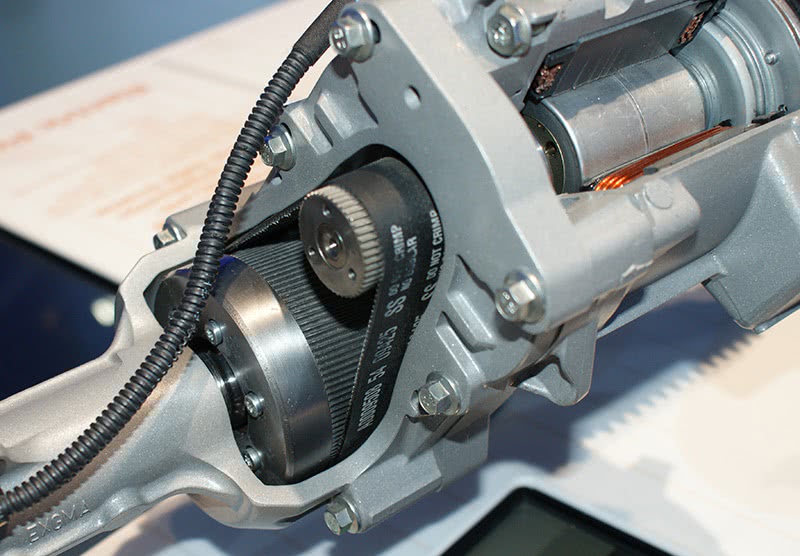
Ford’s electronic steering assist uses an electric motor that drives a belt. This belt is serviceable, although as you can see it will require the steering rack to be taken apart. We will have to wait and see if we are going to repair or replace this new technology.
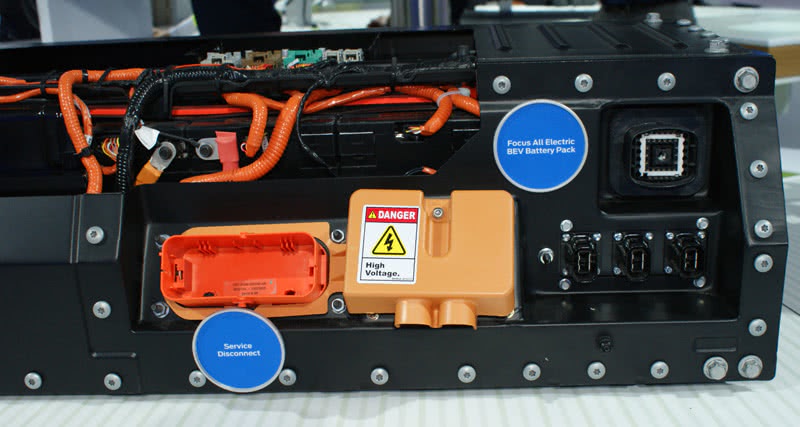
The service connector is located on the battery pack of this hybrid Ford Focus. Typically, the service connector splits the series-wound battery packs in half to drop the voltage to safer levels. You should still use high voltage gloves and CAT III test leads when servicing hybrid vehicles.
Â
Jeep
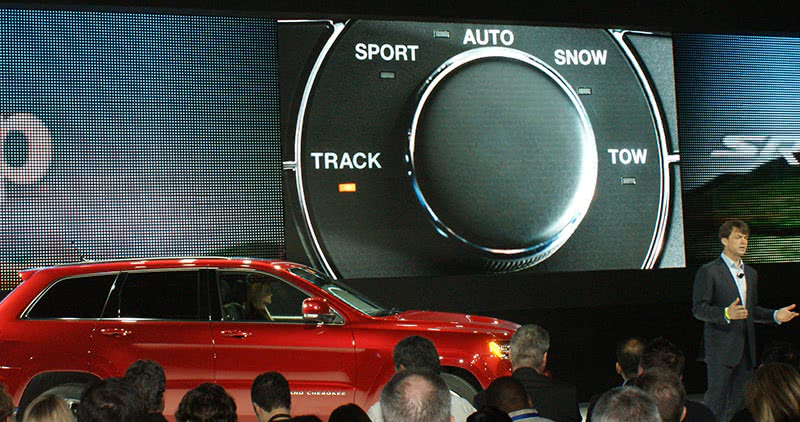
The new performance-oriented Grand Cherokee SRT-8 will have an adaptive damping system. With a turn of the dial, you will be able to set up the vehicle for Track, Sport, Auto, Snow and Towing modes. Your scan tool investment will allow you to diagnose problems with these systems.
Being under the Chrysler group, and recently sold to Fiat, Jeep has already revamped its line of vehicles and is enjoying some sales success. The Wrangler is still the same vehicle mechanically with only a few trims being added. The Grand Cherokee has received a shot of adrenaline with the new SRT 8, a 6.4L hemi V8 capable of producing 465 horsepower. With a new “Active Valve Exhaust System†fuel consumption is reduced, giving the high-horsepower V8 a 450 mile range on a tank of fuel. Look in future installments of Master Technician Online for an in-depth look at its operation and diagnosis. The camshafts have variable valve timing, so engine oil condition will be important in keeping that MIL off.
Â
Nissan
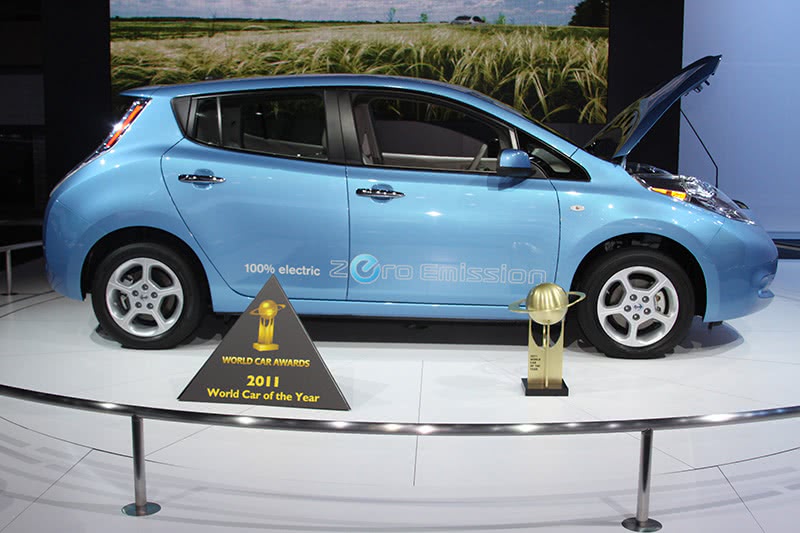
At the 2011 New York International Auto Show, the 100-percent electric, zeroemission Nissan LEAF was named 2011 World Car of the Year. (Courtesy NYIAS)
Nissan’s New all-electric Leaf enjoyed honors at the show as World Car of the Year on the second press day. There are some potential technical problems such as high-voltage leaks that cause the vehicle to shut down. Hybrids, on the other hand, typically have parallel systems so the vehicle can still be driven. Nissan also introduced the 2012 Versa powered by a 1.6L engine that is touted as being very fuel efficient. The injection system is new and sprays a finer mist that increases efficiency and reduces emissions. We will have to see what happens when these injector start to clog. Variable valve timing is used on both the intake and exhaust cams, and we know how that has worked for Nissan in the past.
Â
Hyundai

Hyundai promoted its “Over 40†club. New in their vehicles is a dual-plate six-speed manual gearbox. Also offered are two new automatic transmissions, a six speed and an eight speed.
Hyundai was promoting its line of vehicles that all get over 40mpg on the highway. The Sonata Hybrid, Elantra, Accent, and Veloster can all make that claim. Direct injection and continuing development of the internal combustion engine are two strategies Hyundai has invoked to achieve better fuel efficiency. The company feels that the development costs and infrastructure for hybrids and plug-in hybrids are just too high and their sales figures back this up. The Sporty Veloster receives a dual-clutch six-speed manual transmission. Other models will use six- and eight-speed automatic transmissions and a single-clutch six-speed manual gearbox.
Â
Mercedes-Benz
Mercedes-Benz unveiled the new C63 AMG coupe. The 6.3L non-turbo engine has high-pressure direct injection, which increases fuel economy and horsepower, and reduces emissions. M-B also presented the A-Class concept vehicle. Although it is a smaller A Class, it is still going to have all the technological advancements found on the luxury models, particularly when it comes to safety. Electronic Stability Control and active accident prevention systems will all be standard features as ABS and traction control are now. All these new systems are going to require powerful scan tools for diagnosis.
Â
Chevrolet

General Motors President North America Mark Reuss with the new 2013 Chevrolet Malibu during its unveiling at the New York International Auto Show Wednesday, April 20, 2011 in New York City. (Courtesy NYIAS)
The 2013 Malibu was brought to market about a year earlier than anticipated. GM wants to see more sales and wants the Malibu to compete with Camry and the like. It must be difficult to run a car company with the government looking over your shoulder. The Malibu will only have the 2.5L four making 190 horsepower. The optional engine is the mild hybrid 2.4L ECOTECH. The Chevy Volt was still the talk of the show with its all-electric platform with ICE (Internal Combustion Engine) only there to run a generator. Better get some mild hybrid training, and soon.

General Motors President North America Mark Reuss with the new 2013 Chevrolet Malibu (left) and Malibu Eco during their unveiling at the New York International Auto Show Wednesday, April 20, 2011 in New York City. (Courtesy NYIAS)
Â
Subaru
Subaru has upgraded its lineup over the past four years. This year it is the Impreza’s turn, and it boasts 36mpg, which is pretty good for a 4WD car. This is important to our customers especially in the northeastern part of the country. A return to a longer-stroke 2.0L engine makes 148 hp. Other than this, the changes are largely cosmetic. Subaru does tend to have a high resale value, so your customers are more likely to invest in the vehicle they have as opposed to buying a new one.

Jack Hollis, Scion vice president, unveils the rear-wheel drive Scion FR-S Concept sports coupe at the 2011 New York International Auto Show, April 20, 2011. (Courtesy NYIAS)
Â
Scion
In 2002, the Scion brand was introduced at the New York Auto Show. Before the 2011 show, Scion unveiled the new second-generation tC. The IQ was also introduced within the past year. This micro sub-compact will have ABS, traction and stability control. This means a capable scan tool will be necessary to quickly diagnose all these systems. To maintain that young, sporty image, the company displayed its FR-S concept car. The flat-four boxer engine displaces 2.0L and uses a D4S injection system that has both direct and port injection. There is no doubt that this technology will eventually make its way to Scion’s production cars.
Â
Volkswagen
The Touareg Hybrid was the focus of the Volkswagen press event. VW provides
TDI clean diesel, hybrid powertrains, and conventional ICE engines for its model lineup. These technological advancements mean we will need to step up our knowledge. The Touareg will have a supercharged TSI V6 with an eight-speed automatic transmission. It will also have a powerful electric motor that has a disengagement clutch. TSI and FSI engines have specially-shaped pistons and combustion chambers to swirl and concentrate the charge around the spark plug. Dual-plate clutches are also something we are going to have to start servicing in the coming years.
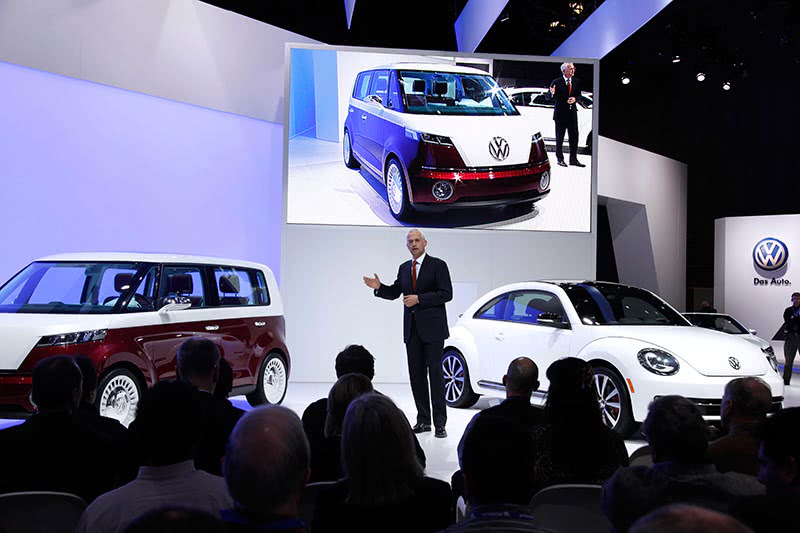
President and CEO, Volkswagen of America, Inc. Jonathan Browning unveils the new Volkswagen Beetle at the New York International Automobile Show. (Courtesy NYIAS)
Â
Audi
Audi has been enjoying much success in certain segments of the luxury car market. It plans on expanding its sales beyond the A4 and Q7 and to promote the new A6, A7, and A8 models. The Audi “Presense†system will tension the seat belts, roll up the windows, preload the brakes and activate them before an accident has actually occurred. MMI Infotainment will continue to be developed. Audi is promoting clean diesel TDI starting with the A8 and followed by the A6 and Q5. The gasoline TSFI engines use direct injection also. A 2.0L four and 3.0L supercharged V6 will be available in the A6 and A8. R8 Etron and Q5 Hybrid will start going into production next year.
Â
Ferdinand who?
Porsche once again pushes the envelope of performance and engineering with the new Turbo S and Hybrid models. The Turbo S has a host of computer-controlled systems such as Launch Control, Porsche Dynamic Chassis Control (PDCC), and Porsche Torque Vectoring Plus (PTV Plus). Launch Control provides traction from a standing start, while PDCC provides traction control during high-speed cornering. PTV Plus uses an electronically-controlled differential lock to maintain traction during spirited driving. The Hybrid model uses a supercharged 3.0L V6 mated to a 47 hp electric motor and a nickel metal hydride battery. It can propel the vehicle for one mile up to 50 mph in electric power only. It also has a unique Sailing mode that can completely decouple the engine from the drivetrain at cruising speed when the driver lifts the gas pedal, and syncs the engine and driveline when the driver applies the pedal again. Better bone up on your electrical theory and get into a hybrid training class.
Â
Jag & Land Rover
Jaguar is revamping its lineup with the new XKRS and XFR models. The XKRS has a 5.0L supercharged engine that features both intake and exhaust cam variable valve timing and direct injection. At over 2,000 psi, fuel is injected in a stratified charge for greater efficiency. I wonder what kind of fuel pressure gauge we are going to use with direct injection.
Land Rover unveiled two new models; the Range Rover Evoque is a slightly smaller and sportier SUV, and the Range Rover Autobiography Limited Edition. The Evoque has a four-cylinder engine with direct injection and a six-speed automatic gearbox. The Autobiography has been called the Rolls-Royce of SUVs, offering serious luxury and a host of interior technology for passengers to play with.
Â
Walter P.’s legacy
Chrysler closed the first day of the show with some new trim lines for the 300 model. The company is being integrated into the Fiat family, so we will probably see more changes in the future. Right now, Fiat is using the existing dealer network to promote its own Fiat 500 here in the states. Stay tuned for Part tTwo of the New York International Auto Show article where we cover day two and go into a little more in depth on some of the new technology we are going to be working on in a few years. For the moment, just strap in and start putting away money for all the new scan tools and software you are going to need to fix these technological marvels.
by Kerry Jonsson




0 Comments